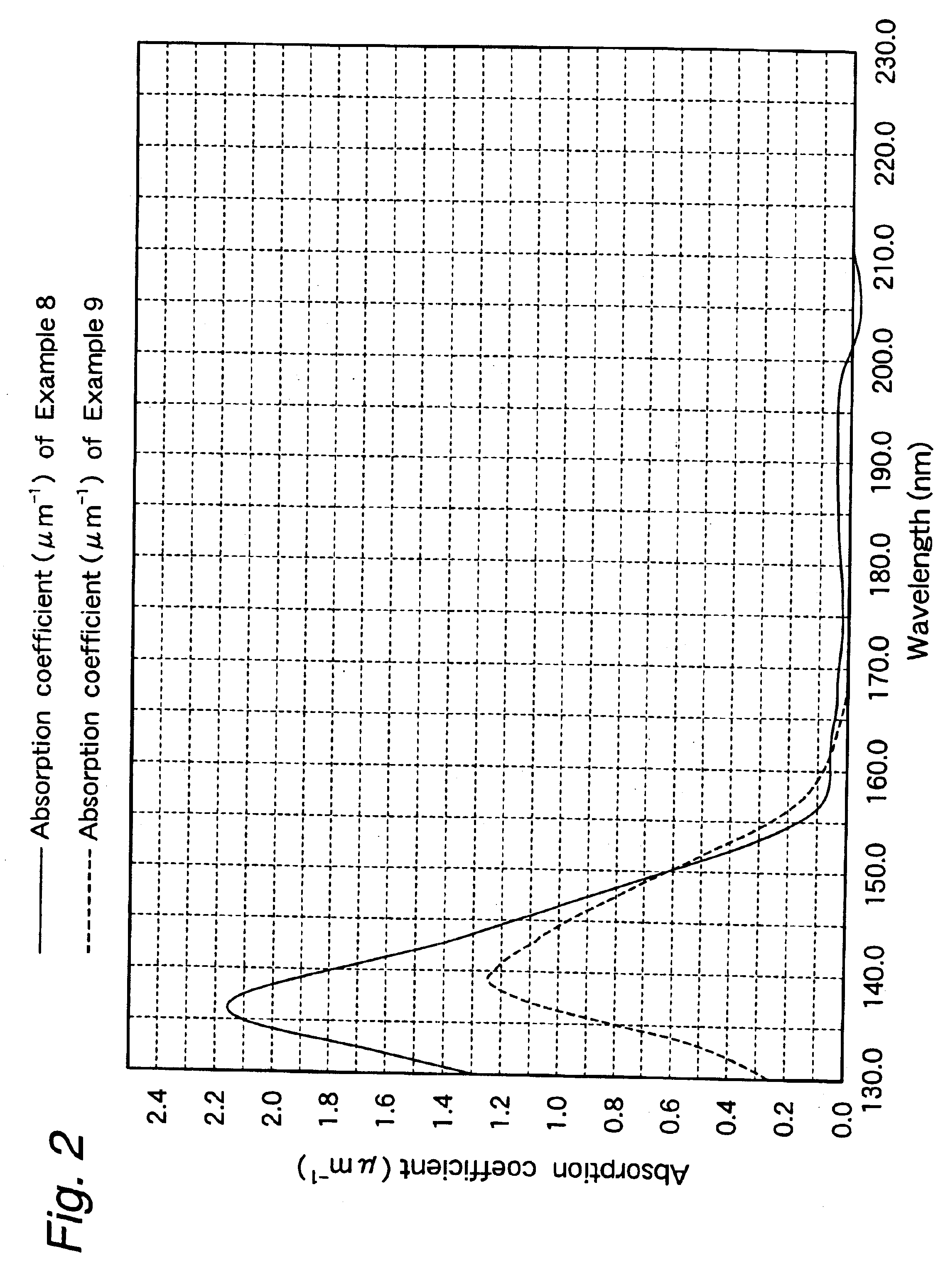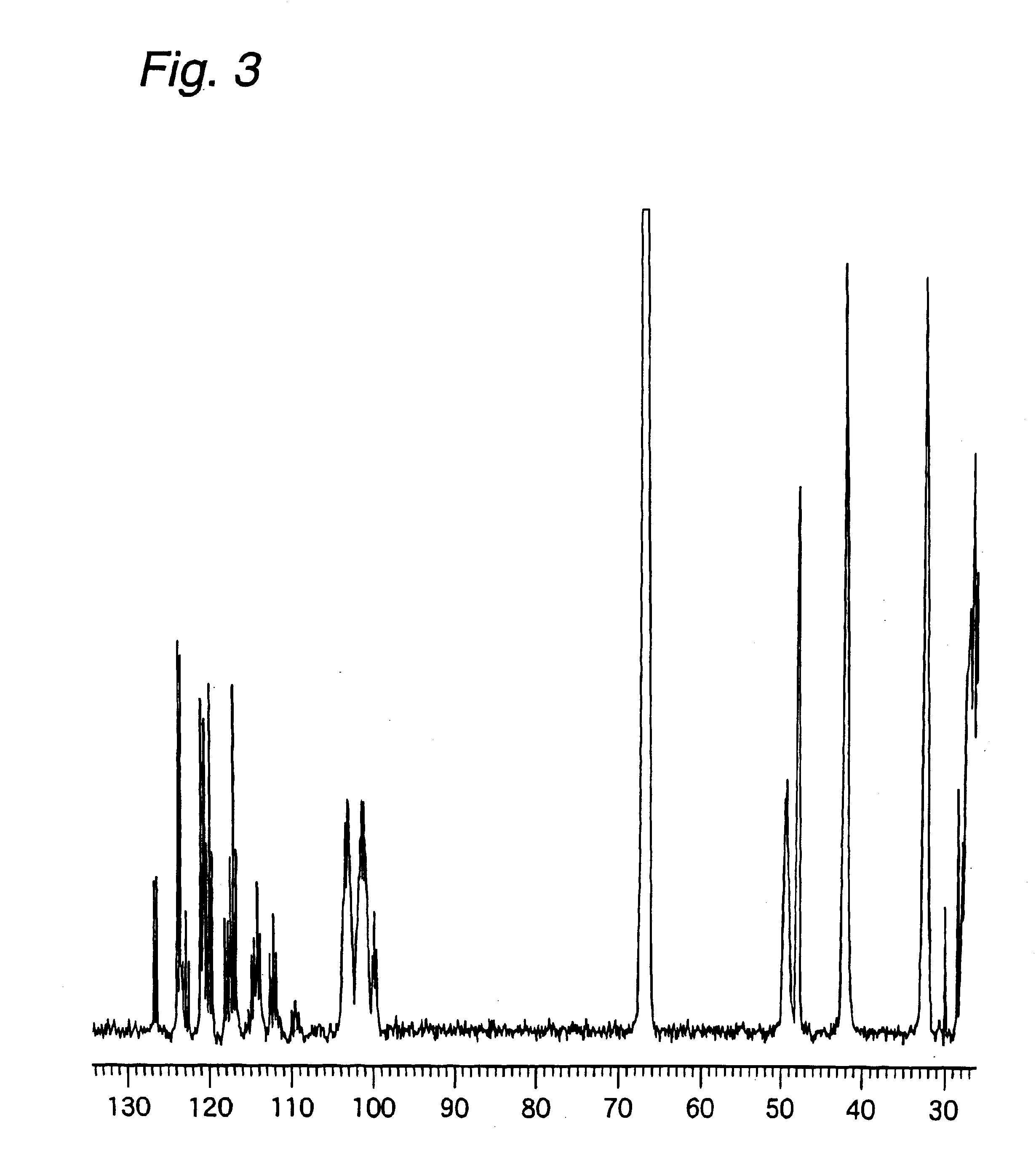Fluorinated cycloolefin polymers, processes for preparation of fluorinated cycloofefin monomers and polymers thereof, and use of the same
a technology of fluorinated cycloolefin and polymer, which is applied in the field of fluorinated cycloolefin polymers, polymers thereof, can solve the problems of increased fluorine content of monomers, water repellency development, and difficulty in selecting materials, and achieves the effect of satisfying light transmission
- Summary
- Abstract
- Description
- Claims
- Application Information
AI Technical Summary
Benefits of technology
Problems solved by technology
Method used
Image
Examples
example 1
In a nitrogen atmosphere, 5 g of 5-trifluoromethylbicyclo[2.2.1]hept-2-ene synthesized in accordance with the aforesaid process and the process of Example 7 described later was placed in a 100 ml flask as a cycloolefin monomer and dissolved in 50 ml of tetrahydrofuran (referred to as “THF” hereinafter), following by stirring with a magnetic stirrer bar. To the solution, 91 mg of W(N-2,6-Me2C6H3)(CHCHCMe2)(OBUt)2(PMe3) was added as a ring-opening metathesis polymerization catalyst, and the reaction mixture was stirred at room temperature for 16 hours. Thereafter, 69 μl of butylaldehyde was added, and the reaction mixture was stirred for 30 minutes to terminate the reaction.
The obtained ring-opening metathesis polymer solution was introduced into 500 ml of methanol to precipitate a ring-opening metathesis polymer, and the polymer was filtered, washed with methanol and dried in vacuo to obtain 3.5 g of a ring-opening metathesis polymer powder.
Thereafter, in a 200 ml autoclave, 2 g of t...
example 2
In a nitrogen atmosphere, 5 g of 5,6-bistrifluoromethylbicyclo[2.2.1]hepta-2,5-diene synthesized in accordance with the aforesaid process and the process of Example 7 described later was placed in a 100 ml flask as a cycloolefin monomer and dissolved in 50 ml of THF, following by stirring with a magnetic stirrer bar. To the solution, 65 mg of W(N-2,6-Me2C6H3)(CHCHCMe2)(OBut)2(PMe3) was added as a ring-opening metathesis polymerization catalyst, and the reaction mixture was stirred at room temperature for 16 hours. Thereafter, 49 μl of butylaldehyde was added, and the reaction mixture was stirred for 30 minutes to terminate the reaction. The obtained ring-opening metathesis polymer solution was introduced into 500 ml of methanol to precipitate a ring-opening metathesis polymer, and the polymer was filtered, washed with methanol and dried in vacuo to obtain 4.9 g of a ring-opening metathesis polymer powder.
Thereafter, in a 200 ml autoclave, 2 g of the ring-opening metathesis polymer p...
example 3
In a nitrogen atmosphere, 5 g of 5,6-bistrifluoromethyl-7-oxobicyclo[2.2.1]hepta-2,5-diene synthesized in accordance with the aforesaid process and the process of Example 7 described later was placed in a 100 ml flask as a cycloolefin monomer and dissolved in 50 ml of THF, following by stirring with a magnetic stirrer bar. To the solution, 113 mg of Mo(N-2,6-Pri2C6H3)(CHCMe2)(OBut)2 was added as a ring-opening metathesis polymerization catalyst, and the reaction mixture was stirred at room temperature for 16 hours. Thereafter, 80 μl of butylaldehyde was added, and the reaction mixture was stirred for 30 minutes to terminate the reaction. The obtained ring-opening metathesis polymer solution was introduced into methanol and subjected to the same operations as in Example 2 to obtain 4.6 g of a ring-opening metathesis polymer powder (fluorine-containing cycloolefin polymer).
Thereafter, in a 200 ml autoclave, 2 g of the ring-opening metathesis polymer powder was subjected to hydrogenati...
PUM
| Property | Measurement | Unit |
|---|---|---|
| absorption coefficient | aaaaa | aaaaa |
| wavelengths | aaaaa | aaaaa |
| wavelengths | aaaaa | aaaaa |
Abstract
Description
Claims
Application Information
 Login to View More
Login to View More - R&D
- Intellectual Property
- Life Sciences
- Materials
- Tech Scout
- Unparalleled Data Quality
- Higher Quality Content
- 60% Fewer Hallucinations
Browse by: Latest US Patents, China's latest patents, Technical Efficacy Thesaurus, Application Domain, Technology Topic, Popular Technical Reports.
© 2025 PatSnap. All rights reserved.Legal|Privacy policy|Modern Slavery Act Transparency Statement|Sitemap|About US| Contact US: help@patsnap.com



